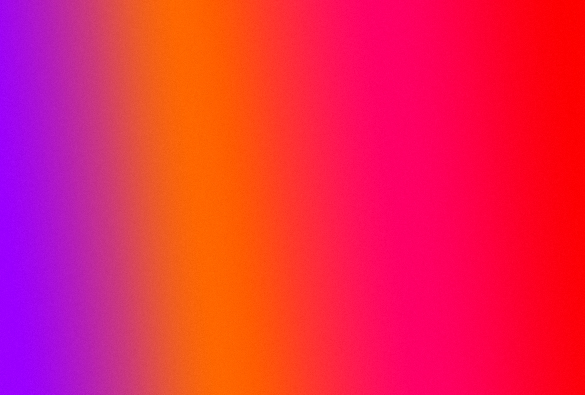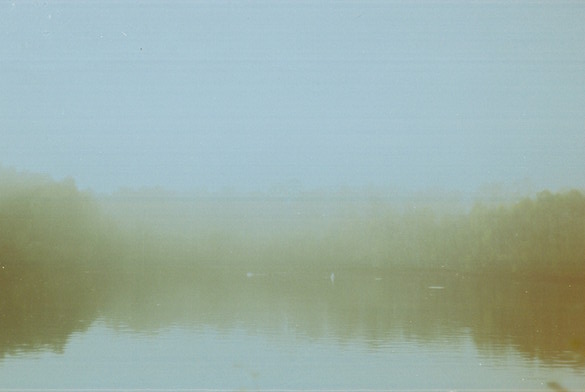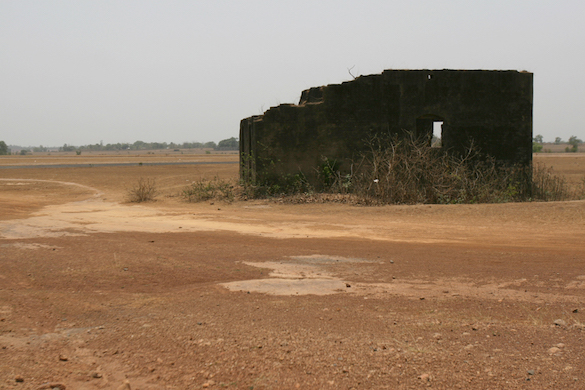Extended Digipak – 3 tracks – 43:19
Mastered By Denis Blackham at Skye Mastering
Artwork and photography by Jon Wozencroft
Track listing:
1. Londinium
2. Coins and Bones
3. Twenty Four Seven
BJ Nilsen (b,1975 Sweden) Is a sound and recording artist. His work is based on the sound of nature and its effect on humans. He primarily uses field recordings and electronic composition as a working method. He has worked for film, television, theatre, dance and as sound designer. His newest album presented here is “Eye Of The Microphone” [Touch # TO:95, 2013] – a somewhat surreal audio rendition of the sounds of The City of London. Currently also working on The Acoustic City, a book publication with CD, co-edited with Matthew Gandy, [2014, JOVIS Verlag, Berlin].
Track notes:
Recorded and Mixed in London 2012 – 2013
++ To stroll properly, one should not have any particular plans ++
In 2012 I received a scholarship from the Leverhulme Trust for a one-year Artist in Residency at the UCL Urban Laboratory in London, to introduce sound as an art practice to urban scholars and students. As part of my research I decided to dérive the city.
I spent full days and sometimes nights sweeping the streets and its interiors for sound – walking and listening with no route or intention. A city without sound does not exist. Every location, passageway, alley, road, park, and pub contains its own world of isolated sound events and patterns – the sound of a shopping bag caught by the wind on the asphalt of a busy street when a bus passes by. What seems to be merely a bus is also a cacophony of sounds, a sound world in itself: hydraulics, breaks, interior noise, honking, public announcements, humans, rolling bottles, cell phones, mp3 players. The rattle of an air-conditioning unit in an old pub toilet gradually develops its broken down sound over many years, creating a raga for it own demise. Nobody seems to hear it. Is it there? The choice of sound varies; it’s a personal selection, some sounds made it into this composition, many hours of recording didn’t.
Sound composition can alter space and time and transform a specific location and experience into an imaginary world.
1. Londonium.
Standing on Francis Street behind Victoria Station, it is a sunny spring afternoon and the air is crisp. For a location so central it is a quiet street, for about ten seconds… As the bells of a nearby church in the Diocese Of Westminster start to chime I press record. They merge into a vehicle and then into a woman on a bike, and as she breaks to make a turn, in the distance a cellphone rings. All the time a train engine has been idle.
London pulls you towards water. You are bound to reach the river at some point. On a grey and foggy afternoon, I reached the bank of the Thames during low tide. There, the sand, algae, mud, and brick buildings isolated the acoustics revealing great detail. An almost interior space, surrounded by old shoes, pieces of porcelain, half a chair, bones, bricks, wood structures, and washed up electronics, it felt like looking into the future as well as the past. To the left there were the distant smudged out towers of Canary Wharf, and to the right Tower Bridge completely shrouded in fog. The drones of the clippers on the river suddenly sounded electronic, the occasional vague beep of metal detectors belonging to coin hunters tracing our past. A chainsaw starts up from one of the workshops nearby. Back in the studio, listening, a surreal city begins to unfold.
2. Coins and Bones.
Without the multi-sensory impressions and visual synchronisation at the very present moment of recording, certain memories and perceptions seem to grow stronger.
Maybe a pure field recording is not the most accurate representation of a place.
3. Twenty Four Seven.
Where does the city begin?
We took the East Anglia Line from London Liverpool Street only a 30 minute ride away and we arrived at Cheshunt Station and stepped into Lee Valley.
It is a vast area of water, grass, reed bed, and woodlands, and lots of wildlife. The weather is perfect, a clear and warm summer day. Here, the sound of distant trains going back into the city served as a backdrop together with overhead airplanes. As we are sitting on a small grass patch by a large pond, ducks, swans and coots suddenly notice us, expecting some food. We gave them some tiny pieces of bread. The swans took over and started to fight. After a long track we end up by Regents Canal and The Kingsland Basin Redevelopment site.
Twenty four seven doesn’t exist here. It’s a microclimate of nuances and the personal mind of getting up early to make some recordings.
A microphone is both a lark and a night owl.
Cover Photography
St. Paul’s as seen from the London Eye. Cranes rebuilding the City – a highchair for birdsong…
www.bjnilsen.com
Continue reading →













